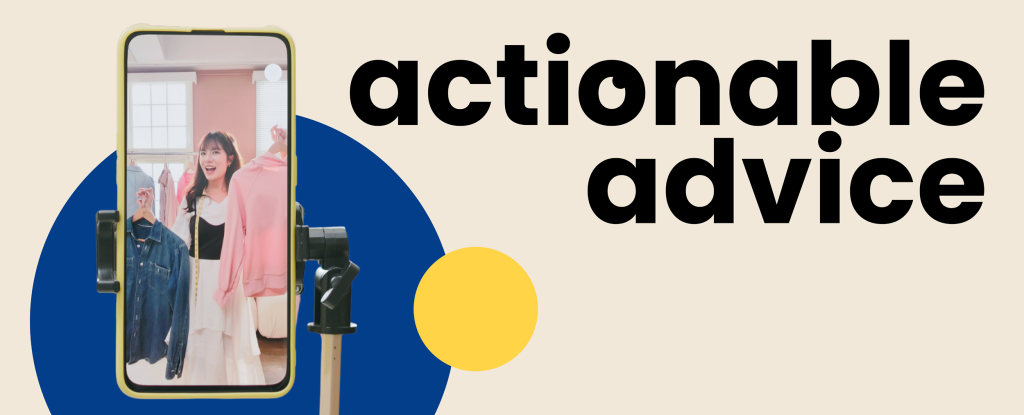Happy Monday! The week is fresh, opportunities are endless, and yes, your to-do list is probably already glaring at you.
We’ve packed this issue with must-know updates to help you sell smarter, plan better, and stay sane.
- What’s holding back your growth? 📉
- Waiting for payouts? Blame DD+7 😤
- Gen Z can’t resist “add to cart” 🛒
- Should you upgrade your Amazon plan? 🔄
- Get Looped In and take the chaos out of ecommerce accounting ✉️
- We’ll link your newsletter for FREE. Send your applications here. 🤝

TRENDING TOPIC
Sellers, your payday’s about to hit the slow lane.
EcommerceBytes reported that starting March 12, 2026, Amazon will roll out its new Delivery Date +7 (DD+7) policy, meaning your funds won’t be released until seven days after an order is delivered.
⏰ The wait just got longer
Yep, you read that right. Not when it ships, not when it’s confirmed, but a full week after the package lands on your buyer’s porch.
Amazon says the move gives it time to “accrue fees” and lets customers “receive and evaluate their orders.”
Sellers, though, see it differently, calling the change a thinly disguised cash-flow chokehold that helps Amazon’s bottom line more than theirs.
The seller forums lit up with frustration:
- “Insane,” many sellers said, just one more gripe on top of poor FBA reimbursements, messy SAFE-T claims, and unfair A-to-Z resolutions.
- Others warned that untracked shipments could leave their payouts “in limbo” if a delivery scan never appears.
- One seller noted the irony, if Amazon takes seven days to pay, refunds should take seven days too.
🗨️ Amazon’s clarification
Moderators later explained that:
- Tracked orders will be paid seven days after confirmed delivery
- Untracked orders will be paid based on estimated delivery date
- If tracking never updates, Amazon says funds will still be released after the latest estimated delivery.
Amazon says DD+7 ensures fairer handling of returns and fees, with “Disburse on Demand” still available once funds clear.
Sellers, however, see it as another payout delay that tightens cash flow, a policy that feels less like protection and more like waiting longer to get paid.

TOGETHER WITH SELLER INTERACTIVE
What’s really holding your Amazon growth back?

You’ve optimized listings. You’re running PPC. You’ve read all the blogs. So… why isn’t it translating into real growth?
That’s where Seller Interactive comes in.
We’re not here to sell you a magic hack. We’re here to show you exactly what your current strategy is missing.
From underperforming keywords to untapped ad opportunities, our team of Amazon experts will walk you through what’s actually going on inside your account—and where your next wins are hiding.
Our full-service team manages over $2M in monthly ad spend across categories like health & wellness, home & kitchen, supplements, and more. And we don’t just launch ideas—we back them with data, test them, and scale what works.
Think of us as the partner who brings clarity and execution to your Amazon strategy.

BITES OF THE WEEK
- American TikTok: There are worries that the American TikTok platform could be maliciously manipulated.
- Walmart Closure: The Walmart store and pharmacy in Washington will close on October 31.
- Brand Archetypes: Learn Andrew Temes' psychological framework in this free webinar on the 12 Brand archetypes.
- Shein Breach: Shein was found guilty by Swedish courts of breaching rival Nelly's copyrights.

SOCIAL PULSE
Gen Z's impulse buys are fueling ecommerce

Gen Z might just be keeping ecommerce on caffeine. According to Digital Journal, this generation is 25% more likely to make impulse purchases online than older shoppers.
A stat that perfectly sums up today’s scroll-now, buy-now culture.
💳 The golden hour of impulse buys
A new Adobe study found that timing, mood, and even payday vibes have a bigger impact on what makes people click “Buy Now” than ever before.
Online shopping runs on a schedule, and knowing it could be your secret sales weapon.
- Payday means play day. Nearly 1 in 10 shoppers check out the moment their paycheck lands.
- Friday fever. Impulse buys surge at week’s end, with Gen Z leading the charge.
- Evening edge. More than half shop between 6 and 10 p.m., the peak “wind-down” window.
- Night owls spend big. Just 9% shop after 10 p.m., but they’re the top spenders, averaging $3.6K a year.
- Weekend wins. Beauty peaks on Sundays, while gaming and electronics rule Saturdays.
💡 Timing is the new targeting
Gen Z shoppers run on emotion and instant gratification. Launch campaigns right before payday, late at night, or on Fridays, when their “treat yourself” energy peaks.
Pro tip: Personalization seals the deal, especially on discovery-first platforms, where novelty drives clicks and attention disappears fast.

ACTIONABLE ADVICE
Is it time to switch your Amazon selling plan?

Choosing between Amazon’s Individual and Professional plans can make a real difference in your bottom line. Both have perks, but the right choice depends on how you sell, how often you sell, and how fast you plan to grow.
👥 Quick comparison
Here’s what sets the two plans apart:
- Individual Plan. No monthly fee, but $0.99 per item sold.
- Best for: Hobby sellers or those listing fewer than 40 items a month
- Professional Plan. $39.99 per month for unlimited listings, ads, bulk uploads, reports, and brand tools.
- Best for: Sellers ready to scale
🧭 Finding the fit
If you’re on the fence, these checkpoints make it clear:
- Sales volume: Over 40 units a month? Go Professional, it’s cheaper overall.
- Tools: Ads, bulk listings, analytics, and Brand Registry require Professional.
- Goals: Side hustle? Stay Individual. Building a brand? Go Professional.
- Access: Some FBA and ad features need Professional, so check before switching.
No plan is permanent, Amazon makes switching simple.
To switch:
Go to Seller Central → Account Info → Manage Your Services → Selling on Amazon → Apply Changes.
- Upgrading (Individual to Professional): The switch takes effect instantly, with the monthly fee starting right away. Most Pro tools activate within 48 hours.
- Downgrading (Professional to Individual): You may need to unenroll from Pro-only tools first.
Pro tip: Time your switch around your billing cycle, review your enrollments, and double-check payouts after the change.
The best plan is the one that fits where you are right now. You can upgrade or downgrade anytime, at no extra cost, so your plan can flex as your business evolves.








